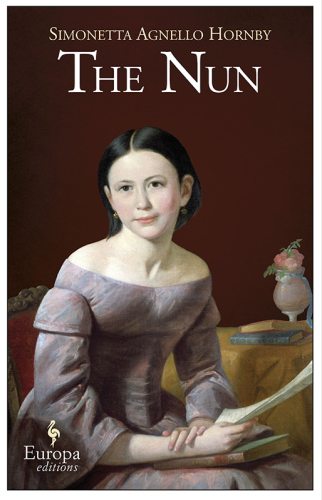
The Nun
- اطلاعات
- نقد و بررسی
- دیدگاه کاربران
نقد و بررسی

October 31, 2011
Agata Padellani, the rebellious daughter of a poor Neapolitan officer from an aristocratic family and his Sicilian wife, is forced to become a nun at age 16, her defiant spirit as resilient as the burgeoning Italian unification movement. Hornby (The Almond Picker) sets her novel in 19th century Italy, beginning in Messina in 1839, as the feast of the Assumption is celebrated at the Padellanis with a solemn procession and a lavish open house, during which Agata sneaks out to rendezvous with her inamorata whose family has other ideas about who he’ll wed. This stolen moment quickly becomes a mere memory when Agata’s father dies and the family decamps to Naples to appeal to relatives and the king. Instead they are reduced to “poor relations,” and Agata’s mother arranges for Agata to enter a Benedictine convent. Reluctant at first, she eventually finds solace reading novels supplied by the handsome English captain she met on the voyage from Messina, hiding her brother-in-law’s revolutionary materials, baking bread, and working as an herbalist and healer, but she also longs for the outside world and freedom from corrupt church politics. Hornby enriches her story with sensuous details of food, fashion, furnishings, and the rules of an extravagant society, savoring local color and personality quirks. Her language is so lush, her heroine so determined, and the landscape she paints so inviting, that it’s easy to overlook some heated language “quivering with passion for the Italian cause” and to succumb to the charm of this thoroughly Italian historical romance.

December 1, 2011
In a desultory historical tale, social rules and money problems force a young Italian aristocrat into the convent. Pity the young females of noble but cash-poor families in earlier times, regarded as burdens and sent to convents because dowries and therefore acceptable marriages were unavailable. Such is the fate of Agata Padellani, heroine of the latest novel by Italian-born Hornby (The Almond Picker, 2005, etc.), set in Sicily and Naples in the first half of the 19th century. Despite masses of research and historical background, this is really the story of one girl's limited choices after her father dies. Agata, 13, in love with a young Sicilian neighbor Giacomo, is relocated to Naples by her newly widowed mother. During the sea voyage Agata catches the attention of English sea captain James Garson, who reappears in Naples and sends her novels. After a crisis with Giacomo, Agata is pushed into a Benedictine convent and begins an interminable sequence of vacillation between hopes for a vocation and desires for a man. She fasts, leaves the convent, turns down an arranged marriage, returns, takes the veil but loses her belief amidst gossip and lurid events such as poisoning and suicide. Eventually, after further travel and imprisonment, a welcome resolution is reached. Hornby opts for an unpredictable, indecisive central character, and the result is a shapeless, unsettled story.
(COPYRIGHT (2011) KIRKUS REVIEWS/NIELSEN BUSINESS MEDIA, INC. ALL RIGHTS RESERVED.)

December 1, 2011
Award-winning Italian novelist Hornby (The Almond Picker) here presents the story of Agata Padellini, daughter of a high-ranking marshal in 1830s Messina, Sicily. After her father's death, Agata is sent to a convent to keep her away from her true love. On the way there, she is befriended by young British captain James Garson. Agata pines for her beloved, with whom she hopes to be reunited despite her mother's attempts to force her into marriage with another man. She instead settles into her life as a nun, accepting it as her fate, and we are soon immersed in the convent's daily rituals, jealousies, and illicit affairs. During this time, Garson has kept in touch with Agata by sending her censored books. They eventually fall in love, and Agata must find a way out of her vows. VERDICT Although this is a fairly typical romantic plot, the novel turns into something much richer, aided by the undercurrent of ecclesiastical intrigue and the historical backdrop. An enjoyable read, especially for those who like historical romance novels.--Lucy Roehrig, Ann Arbor Dist. Lib., MI
Copyright 2011 Library Journal, LLC Used with permission.




دیدگاه کاربران